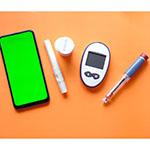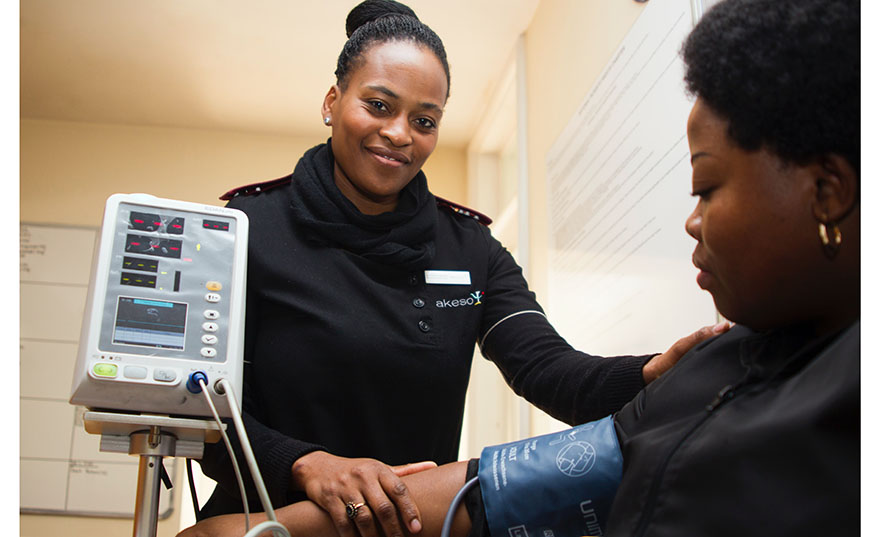Type 2 Diabetes can be managed – and sometimes even “reversed.”
More than 37 million people in the U.S. have diabetes, (learn more about it and its symptoms here) and most have Type 2. In Type 2, your body doesn’t make enough insulin (the hormone that helps the body use or store the blood sugar from food) or your body responds poorly to the insulin that is produced. (In Type 1, the pancreas produces little or no insulin.) When your blood sugar rises too much, it is diagnosed as diabetes.
Rates vary by racial and ethnic backgrounds, with African Americans, American Indians, and Alaskan natives more likely to get it than other groups.
While no one is happy to get that diagnosis, there’s good news: Type 2 diabetes is sometimes reversible. If it’s not, lifestyle changes can help you manage it and decrease the risk of getting serious complications, such as heart, vision or nerve issues.
Losing even 5% of your body weight can improve your health
Managing Type 2 Diabetes
If you are overweight, the first thing your doctor will probably advise is to lose weight by reducing calories and boosting exercise. Losing even 5% of your body weight can improve your health. Making these healthy lifestyle changes, plus taking medications if recommended, can help control blood sugar levels and reduce the risk of complications.
A diet overhaul is often the first thing to focus on, says Amy Hess-Fischl, MS, RD, a certified diabetes educator at Kovler Diabetes Center at the University of Chicago Medicine. “It’s about significantly reducing the calories you are consuming,” especially the carbohydrates impacting blood sugar levels,” she tells her patients. Physical activity is also crucial.
Her tips: Adopt a “I’ll do whatever it takes” attitude and prepare to work hard. “Document everything you eat and drink,” she suggests. Plan to exercise an hour a day on most days, she says.
“Reversing” Type 2 Diabetes
Weight loss can sometimes even reverse diabetes, although some experts prefer the term ”remission” to reversal. In 2021, the American Diabetes Association, along with the European and UK diabetes associations and the Endocrine Society, published the definition of remission of Type 2, saying it can be achieved by weight loss from diet restriction or from bariatric surgery.
To reverse diabetes, a person must achieve an A1C of less than 6.5% (a measure of blood levels averaged over the previous 2-3 months) and keep blood levels normal for at least 3 months, without diabetes medications, the experts agree.
It’s not easy.
Weight Loss and Diabetes
There are many approaches to weight loss with the goal of sending diabetes into remission.
One of the most stringent is the program of Roy Taylor, MD, a professor of medicine at Newcastle University in the UK and a pioneer in this approach. Taylor’s plan, best supervised by a doctor – don’t try it on your own – involves cutting calories to a spartan 700 or 800 a day. (For reference, foods’ nutrition facts labels are based on 2,000 calories a day.) Taylor’s program has helped many “reverse” diabetes—and stay in remission. He gives details in his book, Life without Diabetes. He tells Senior Planet that relatively rapid weight loss, of around 30 pounds, is ”the most universally successful way” to achieve the amount of weight loss needed.
It’s based on his research on why the condition occurs. “Type 2 diabetes is due to a person exceeding their own Personal Fat Threshold and is not ’caused’ by any particular level of BMI,” Taylor says. (BMI, or body mass index, is a measure of height to weight used to gauge overweight, with a BMI of 25 the start of being overweight.)
Bariatric surgery is another way to reverse diabetes. In a comparison of bariatric surgery and medical management of Type 2 diabetes (weight loss, medication, exercise, etc.) bariatric surgery produced remission in 33%-90% of people, but medical management produced it in none or up to 33%. However, bear in mind that any surgery contains risks and should not be undertaken lightly. Bariatric surgery requires drastic and permanent lifestyle changes.
Tech Can Help
 Whichever approach you take, consider leaning on technology, Hess-Fischl says, to keep you on target with lifestyle changes. Shop around for apps that appeal to you. “Use a wearable fitness device that also tracks your sleep [more sleep, better food choices] and how much you are moving,” she says. Ask your doctor what other forms of technology might help; for a list of some options, see the ADA’s take. Smart pens, blood glucose monitors and continuous glucose monitoring are just three options to it easier to manage blood sugar and weight.
Whichever approach you take, consider leaning on technology, Hess-Fischl says, to keep you on target with lifestyle changes. Shop around for apps that appeal to you. “Use a wearable fitness device that also tracks your sleep [more sleep, better food choices] and how much you are moving,” she says. Ask your doctor what other forms of technology might help; for a list of some options, see the ADA’s take. Smart pens, blood glucose monitors and continuous glucose monitoring are just three options to it easier to manage blood sugar and weight.
Need help covering the sometime pricey diabetes meds and technology? Go here.
Want to know more about staying healthy? Join us for live virtual fitness classes, lectures and discussion groups on health topics. Learn more here!

Kathleen Doheny is a Los Angeles-based independent journalist, specializing in health, behavior, fitness and lifestyle stories. Besides writing for Senior Planet, she reports for WebMD, Medscape, Endocrine Web, Practical Pain Management, Spine Universe and other sites. She is a mom, mother-in-law and proud and happy Mimi who likes to hike, jog and shop.
This article offered by Senior Planet and Older Adults Technology Services is for informational purposes only and is not intended to substitute for professional medical advice, diagnosis, or treatment. Always seek the advice of your physician or other qualified health provider with any questions you may have regarding any medical condition or before starting an exercise regimen. If you think you may have a medical emergency, call your doctor or 911 immediately.
Photo: (Top) by Hush Naidoo Jade Photography on Unsplash
Middle: Photo by Towfiqu barbhuiya on Unsplash
